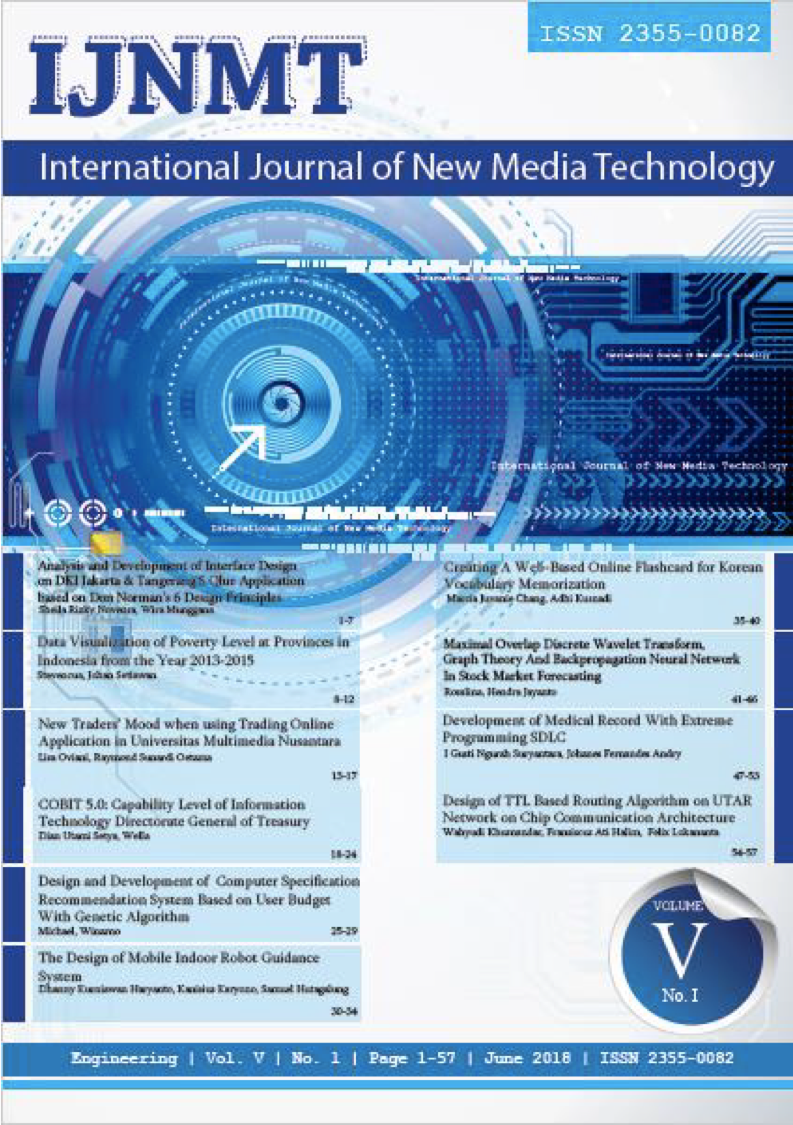Analysis and Development of Interface Design on DKI Jakarta & Tangerang‘S Qlue Application based on Don Norman's 6 Design Principles
DOI:
https://doi.org/10.31937/ijnmt.v5i1.809Abstract
The Qlue Community App is one of government's effort to embrace the social media trend. Initial study of user experience showed that there are two things in Qlue App user experience that don't comply with six design principles from Don Norman's Design Principles. The two things are constraints and consistency. That was the reason for this research, to analyze and make a better version of user interface for the community service application based on the six design principles from Don Norman. Methodology used in this research is Task-Centered System Design (TCSD). The result of this research is an UI that have a constraint which is a warning page that appeared before user finished writing any report and wanted to go back to previous page. The second result is a consistency of all report writing process and interface including buttons and icons. The conclusion of this research is that the revised proposed user interface has solved the problems that appeared on the UI of Qlue application.
Index Terms” Donald Norman, Six Design Principles, Task-Centered System Design, TCSD, User Interface Analysis, Qlue.
Downloads
Downloads
Published
How to Cite
Issue
Section
License
Authors retain copyright and grant the journal right of first publication with the work simultaneously licensed under a Creative Commons Attribution-ShareAlike International License (CC-BY-SA 4.0) that allows others to share the work with an acknowledgement of the work's authorship and initial publication in this journal.
Authors are able to enter into separate, additional contractual arrangements for the non-exclusive distribution of the journal's published version of the work (e.g., post it to an institutional repository or publish it in a book), with an acknowledgement of its initial publication in this journal.
Copyright without Restrictions
The journal allows the author(s) to hold the copyright without restrictions and will retain publishing rights without restrictions.
The submitted papers are assumed to contain no proprietary material unprotected by patent or patent application; responsibility for technical content and for protection of proprietary material rests solely with the author(s) and their organizations and is not the responsibility of the IJNMT or its Editorial Staff. The main (first/corresponding) author is responsible for ensuring that the article has been seen and approved by all the other authors. It is the responsibility of the author to obtain all necessary copyright release permissions for the use of any copyrighted materials in the manuscript prior to the submission.















